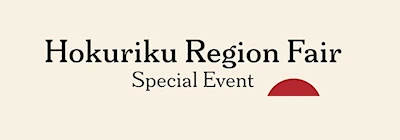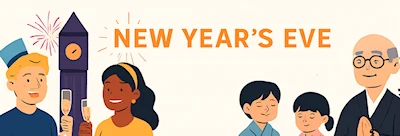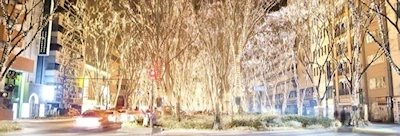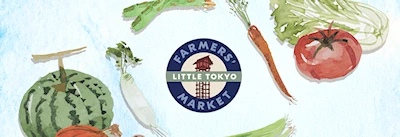Historic Japanese Garden to Reopen April 11, 2012 - The Huntington, '20 million visitors since opening' New Features AddedNEW
-
January 11, 2026, Sunday (Today): 12:00 pm - 3:00 am
2026 Celebrate the New Year at Japanese Heritage Shoya House: Traditional 'Shogatsu' (Taiko, Crafts, Mochi-Pounding, Ikebana..) -
January 25, 2026, Sunday: All Day (in 14 Days):
Mineo Mizuno: Homage to Nature - Celebrates the Beauty of Wood in its Natural State & Emphasizes Reusable & Renewable Resource (Video) Other Events At This Location
Huntington Library, Art, Museum, and Botanical Gardens (Japanese Garden)
This Specific Event Date Has Passed
Upcoming Events and Dates at This Location


- No Additional Dates.                   
San Marino, CA 91108 USA
HISTORIC JAPANESE GARDEN TO REOPEN APRIL 11, 2012
The Huntington's Iconic Garden Celebrates Its Centennial Completely Refurbished, and with New Features.
 SAN MARINO, Calif.-The historic Japanese Garden at The Huntington Library, Art Collections, and Botanical Gardens reopens Wednesday, April 11, 2012, in time to celebrate its centennial after undergoing a complete year-long, $6.8 million renovation. Among the new features visitors will see is an authentic Japanese ceremonial teahouse set within a traditionally landscaped tea garden, situated on a southwest ridge above the existing Japanese house that has served as an iconic backdrop at The Huntington for the last hundred years.
SAN MARINO, Calif.-The historic Japanese Garden at The Huntington Library, Art Collections, and Botanical Gardens reopens Wednesday, April 11, 2012, in time to celebrate its centennial after undergoing a complete year-long, $6.8 million renovation. Among the new features visitors will see is an authentic Japanese ceremonial teahouse set within a traditionally landscaped tea garden, situated on a southwest ridge above the existing Japanese house that has served as an iconic backdrop at The Huntington for the last hundred years.
"The Japanese Garden is arguably the most popular spot at The Huntington and has drawn more than 20 million visitors since the institution opened to the public in 1928," says James Folsom, the Telleen/Jorgensen Director of the Botanical Gardens. "It is a garden that functions on multiple levels at once; a magical place, intimate and inspiring. At the same time, it teaches us about Japan's unique landscape traditions, craftsmanship, horticulture, and rituals."
The garden includes a series of koi-filled ponds, a historic moon bridge, and a Japanese house-scenic elements that together make up one of the most frequently photographed landscape views in Southern California. It also features a dry rock "Zen" garden, a bonsai garden, and now a tea garden that will, on occasion, be used to demonstrate the traditional Japanese tea ceremony.
The teahouse, called Seifu-an (the Arbor of Pure Breeze), was donated to The Huntington by the Pasadena Buddhist Temple in 2010.† Built in Kyoto in the 1960s, it made a return trip to Japan for restoration in the fall of 2010. Kyoto-based architect and craftsman Yoshiaki Nakamura (whose father built the original structure) oversaw the restoration. The teahouse was disassembled from the temple site, shipped to Kyoto, restored and shipped back to San Marino this past May, then painstakingly reassembled here under the tutelage of Nakamura and other expert craftsmen who had traveled from Kyoto for the project. The teahouse now sits on a picturesque ridge on the southwest side of the Japanese Garden with a view that extends across the canyon, providing visitors with a stunning new vantage point from which to admire the historic vista below.
"The Japanese Garden project provides us with exceptional opportunities for talking about the history of The Huntington as well as the history of the Japanese experience in Southern California," says Steven S. Koblik, president of The Huntington. "For researchers, students, and the casual visitor alike, here is a visual feast and a cultural and historical icon. Moreover, for those who still wonder about the distinctions between a Japanese and a Chinese garden, walking from one to the other here at The Huntington will give you ample opportunity to compare and contrast. They couldn't be more different, each extraordinarily beautiful in its own right."
Currently, workers at The Huntington are completing the historical restoration of the Japanese house, led by preservation architect Kelly Sutherlin McLeod of Long Beach. Repairs to the central pond system and water infrastructure are under way as well, along with renovation of the original faux bois (false wood) ornamental trellises. The project includes improvements to pathways, making them more accessible. Landscape architect Takeo Uesugi and his son Keiji Uesugi, both affiliated with California Polytechnic University, Pomona, oversaw design plans for the landscape which include the creation of a new waterfall to the south of the Japanese house.
Garden History
The Huntington's Japanese Garden is among the oldest and most elaborate of its kind in America. It is also one of the most beloved. Established in 1912, it was inspired by widespread Western fascination with Asian culture. As was fashionable at the time, many wealthy Americans and Europeans added exotic gardens to their estates. The Japanese gardens exhibited at world's fairs and expositions in St. Louis, Chicago, and San Francisco helped to fuel the trend. Huntington founder Henry E. Huntington shared this interest, and at the urging of his superintendent, William Hertrich, he decided to build his own Japanese garden in a scenic canyon on his San Marino estate.
Many of the garden's plants and ornamental fixtures were moved from a property in nearby Pasadena that had failed as a commercial tea garden. Purchased in its entirety by Huntington, the materials also included the Japanese house that, once relocated to the Huntington grounds, became the dramatic focal point of the garden. The house is an example of a type of upper-class dwelling built in Japan up through the 19th century. Its construction features natural materials-wood, paper, and reed mats. The moon bridge, commissioned by Huntington, was built by Japanese craftsman Toichiro Kawai.
After the institution opened to the public in 1928, the Japanese Garden became a major draw for visitors. But by World War II, staffing shortages-including those resulting from the internment of Japanese American employees-and the political climate of the day caused the Japanese Garden to be closed, and the house fell into disrepair. In the 1950s, members of the San Marino League, the garden's chief philanthropic group, helped support the refurbishment of the buildings and surrounding landscape. Much has been done in the years since to expand and improve the garden, which remains one of the institution's most popular destinations. It also plays an important role in The Huntington's educational mission as the site for numerous school tours and public programs fostering understanding of Japanese culture and horticultural art forms, such as bonsai.
Landscape
Occupying more than nine acres on the slopes of a canyon, this is one of America's oldest, most elaborate, and gracefully matured Japanese gardens. A walled courtyard containing a rock and sand garden and a recently expanded bonsai exhibition area were added in 1968. The garden boasts several beautiful forms of Japanese red pine, handsome spreading junipers, large cycads, arbors of wisteria, and 30-foot-high sweet olives.
From January through April such fruit trees as the Japanese flowering apricot, 'Pink Cloud' cherry, flowering peaches and single- and double-flowered plums provide a succession of color. The lavender blooms of wisteria add to the spring show along with camellias and azaleas in white and many shades of pink. Alongside the large pond are a weeping willow overhanging the bridge, clusters of cycads, and junipers. Pines, which are mainstays of the garden, include Japanese black pine, Japanese red pines (common, weeping, umbrella, and Dragon's Eye), as well as non-Asian pines such as Aleppo, Stone, Canary Island, and Torrey. Lotus, water lilies, and iris decorate the ponds in spring and summer.
The rock and sand garden, also known as Karesansui, is intended for contemplation. The gravel is raked to evoke the feeling of a flowing stream, interrupted here and there by rocks. This is a very symbolic garden where the viewer quietly uses his or her imagination to interpret the scene. The garden glows in the fall as the leaves of the ginkgo turn to shimmering yellow. The bonsai court, created in collaboration with California Golden State Bonsai Federation (a nonprofit educational organization that promotes the art of bonsai throughout the state), features more than 70 world-class examples of this Japanese art-trees pruned on a miniature scale in shallow pots to represent tree forms of ancient age and natural, elegant lines. Beautiful specimens take many years to create and can live for centuries. In Japan, valuable specimens are passed down from generation to generation.
†
The Next Hundred Years
Despite the Japanese Garden's beauty, age had taken its inevitable toll: Rotted wood, termite damage, splitting plaster, and shifting soil that threatened retaining walls all demanded thorough attention. A team of architects with backgrounds in historic renovation, horticulturists, landscape architects, engineers, and Japanese craftsmen assembled to take on the year-long project led by Folsom and horticultural curator David MacLaren. Among the many poignant events in this process was the realization by Nakamura, brought on to examine and refurbish the Buddhist Temple's teahouse, that the structure was, in fact, built by his father long ago in Kyoto. "It was an amazing small-world moment," says Folsom, "and one of the great stories we'll tell over and over again as we unveil this revitalized garden in the spring for visitors to again experience as their own."
†Major support for the Japanese Garden restoration was made possible by the Mary B. Hunt bequest, the Michael Monroe and Deane Weinberg bequest, the Ralph M. Parsons Foundation, The Rose Hills Foundation, Frank and Toshie Mosher, and an anonymous foundation. Additional support was provided by Kay and Steve Onderdonk.
Hours
Monday: 12 p.m. to 4:30 p.m.
Tuesday: Closed
Wednesday: 12 p.m. to 4:30 p.m.
Thursday: 12 p.m. to 4:30 p.m.
Friday: 12 p.m. to 4:30 p.m.
Saturday: 10:30 a.m. to 4:30 p.m.
Sunday: 10:30 a.m. to 4:30 p.m.
Phone - Call to Verify
(626) 405-2100
Disclaimer: Please double check all information provided on our platform with the official website for complete accuracy and up-to-date details.
Saturday, 2 June, 2012
All Dates For This Event
Event Contact
Event Organizer Website
Visit Organizer Website
Get More Details From the Event Organizer
Event Location Website
Visit Location Website
For More Location Details
Event Information Can Change
Always verify event information for possible changes or mistakes.Contact Us for Issues














